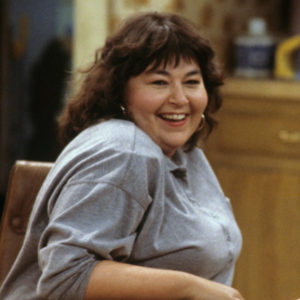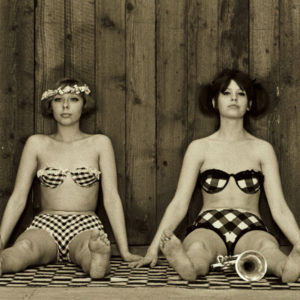While thinking about Daisies and the carnivalesque, I was reminded of an article I read analyzing Roseanne Barr as an “unruly woman” (Rowe 203). Having made some inexcusably heinous racist remarks in real life, Barr often detrimentally leans into her intentionally offensive persona. Her controversial abrasiveness in general, however, is worthy of analysis in comparison to the two Maries in Daisies. In her self-titled sitcom, Roseanne embodies “excess” and “looseness,” two key dimensions of unruliness (Rowe 203). She belches, feasts, and takes up space like the Maries do. Feminine unruliness, though, is not uniformly moderated.


To the extent that the grotesque and carnivalesque are spectacles of the body, there too can we locate the nuance in the consumptive gaze at and construction of unruly women. The Maries’ excess is embodied in chosen behavioral patterns, and as conventionally attractive women their looseness is sexualized and rendered childish annoyance rather than truly punishable. They indulge in surreality and lavish decadence. Roseanne’s excess is predetermined by societal bias against fatness (especially female fatness) and her looseness thus met with true disgust (Rowe 204). She is a working class embodiment of unruliness. Although the Maries perhaps criticize patriarchal stereotypes of infantilizing women by deliberately employing them for their schemes, their reception is still dictated by the politics of desirability that, while ultimately oppressive, can still be permissive. Like Roseanne, they create a spectacle of themselves, but the actual possibility of a non-superficial upheaval of power and expectation in this viewership dynamic is still questionable.
The camera as a mediator is somewhat inherently an agent of “animalization,” as Eco calls it, its frame objectifying its subject, caging it yet cheaply venerating it as a zoo animal (2). Whether embracing a stereotypical girly girlness like the Maries or rejecting it entirely like Roseanne, it seems any gender performance can be reduced to fantasy and puppetry once observed. Regardless of their craft and intention, then, the liberative and revolutionary capabilities of these texts seem to inevitably be seized by the clutches of a societal gaze, marred even and in some cases especially when that gaze is sought to be reclaimed. At the same time, Rowe offers that “by returning the male gaze, we might expose (make a spectacle of) the gazer” and capitalize on the power granted by visibility (205). Perhaps this is the true aim of the Maries, but even if so, the very use of patriarchal lenses may serve to reconstruct them, for even subversion “remind[s] us of the existence of the rule” (Eco 6).
Works Cited
Eco, Umberto. “The frames of comic ‘freedom,’” Carnival!, Volume 64, Mouton Publishers, 1984, pp. 1-9.
Rowe, Kathleen. “Roseanne: Unruly Woman as Domestic Goddess,” Screen Volume 4 Issue 31, 1990, pp. 202-211.
This is such interesting commentary on the performance of gender. It’s true that the conventional attractiveness of the Maries allows them greater opportunity in society to be unruly than in Roseann’s case where potentially the unruly behavior was playing into society’s expectation of her. This manipulation of society’s expectation is probably what makes it funny, that people wouldn’t expect her to actually engage.
Cool feminist analysis! If we take Eco’s point about the carnivalesque reaffirming societal rules, I wonder if gender performances, such as Roseanne Barr’s, actually prop up the established gender binary. Since she identifies as a woman, does her deliberate attempt at transgression merely confirm the definition of the ideal woman and prescriptive gender categories?